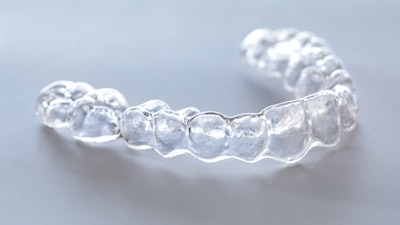
Patients' social media posts about clear aligner therapy range from positive to negative, including complaints about treatment duration, pain, and sleeping difficulties, once they begin treatment. The study was published on May 20 in Seminars in Orthodontics.
Clinicians may need to discuss patients' perceptions before and during clear aligner therapy, the authors wrote.
"Understanding the patient's perspectives can assist orthodontists treating patients with CA (clear aligner) in effectively anticipating and communicating issues that may arise during treatment such as pain, compliance, speech adaptation, and understanding of appliance limitations," wrote the authors, led by Dr. Fabrizia d'Apuzzo, MS, PhD, a research fellow at the multidisciplinary department of medical-surgical and dental specialties with the University of Campania Luigi Vanvitelli in Italy.
To investigate the content of patients' and prospective patients' clear aligner treatment-related Instagram posts before, during, and after treatment, a social media monitoring software application collected 2,015 posts over a four-week period and categorized them as positive, negative, and neutral.
Of these posts, 422 were made before treatment, 1,503 during treatment, and 90 were made after treatment, and all were reviewed manually by three investigators.
Prior to clear aligner therapy, 90% were positive. During treatment, about 45% were positive and nearly 55% of posts were negative. Of the negative post, 39% were related to pain, about 18% were related to treatment compliance demands, and 12% were about the effects they had on eating. Other complaints related to speech difficulties; disappointments with taste, smell, and the staining of aligners; aesthetics; and sleep disturbances, they wrote.
While 60% of post-treatment posts contained positive comments about treatment outcomes and their relationships with clinicians, 40% were negative and focused on treatment taking longer than expected, the authors wrote.
However, the study had limitations. Since data was taken from social media posts, the participants were not available for validation, they wrote.
"Communication before and during treatment may potentially enhance patient satisfaction," d'Apuzzo et al wrote.




















